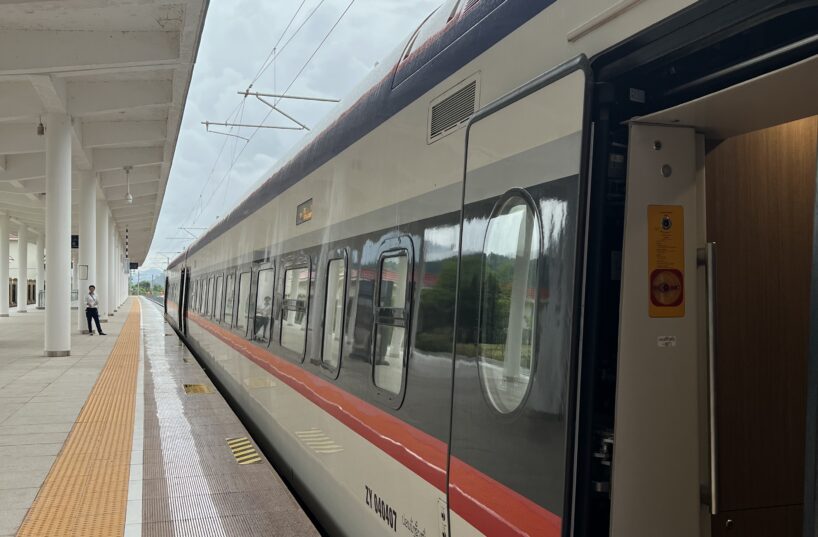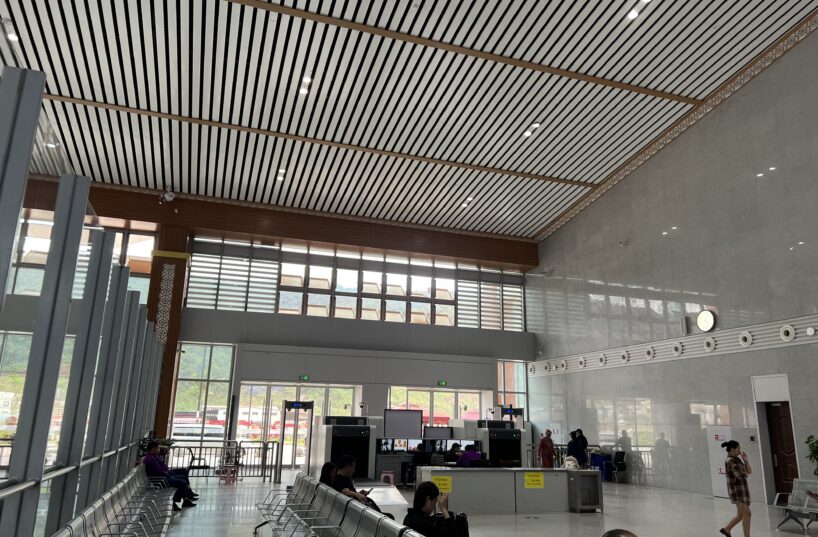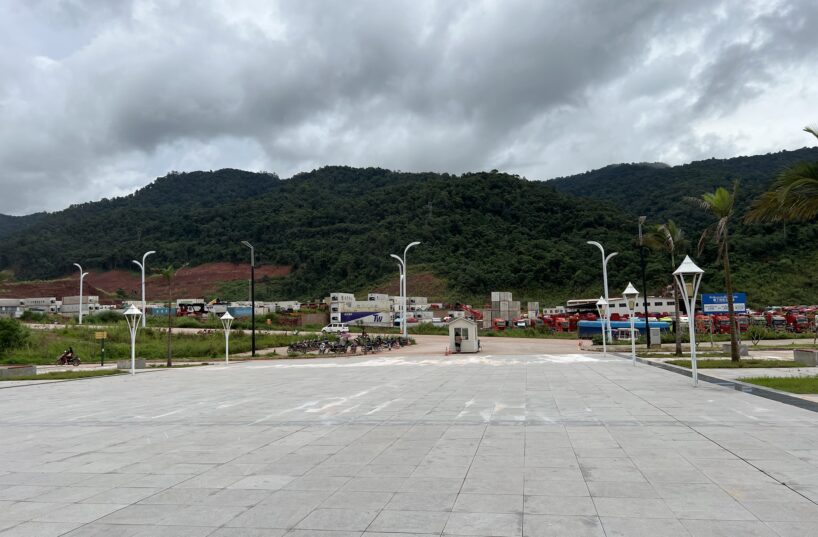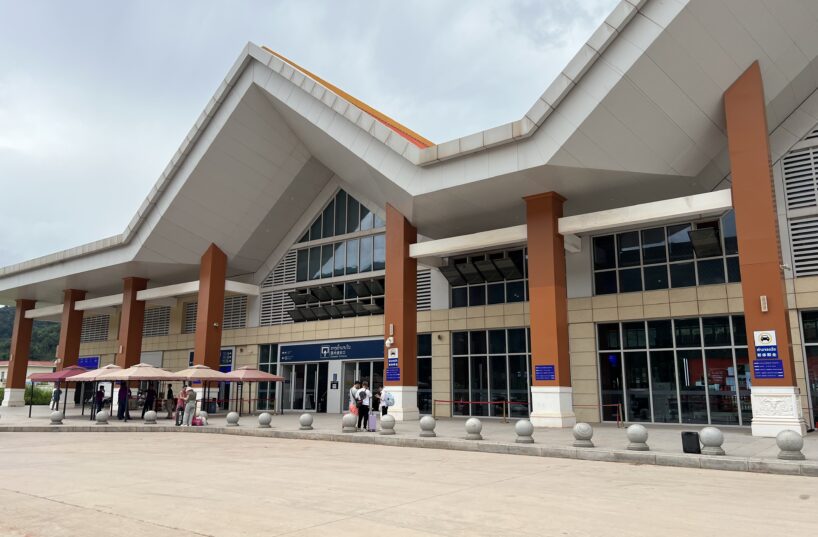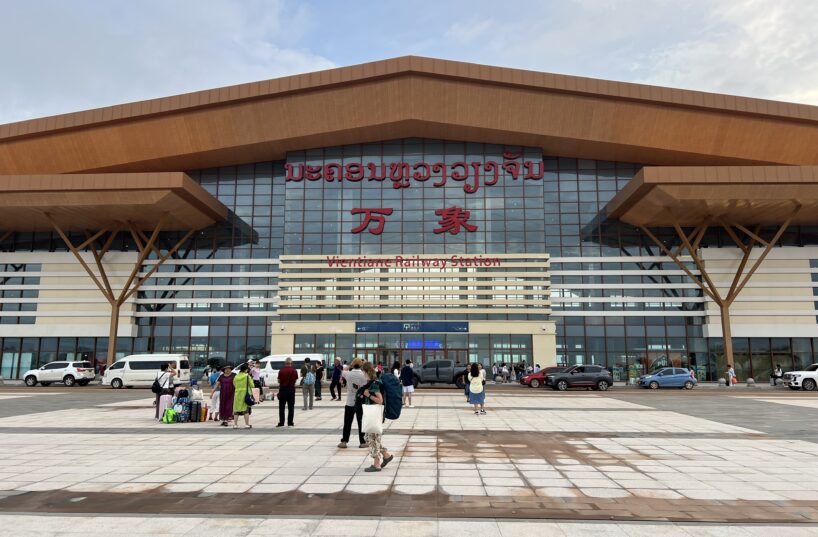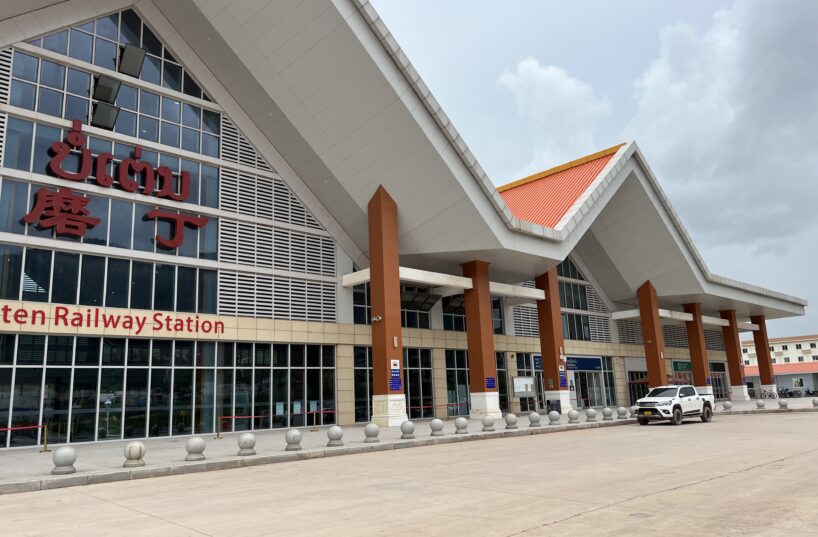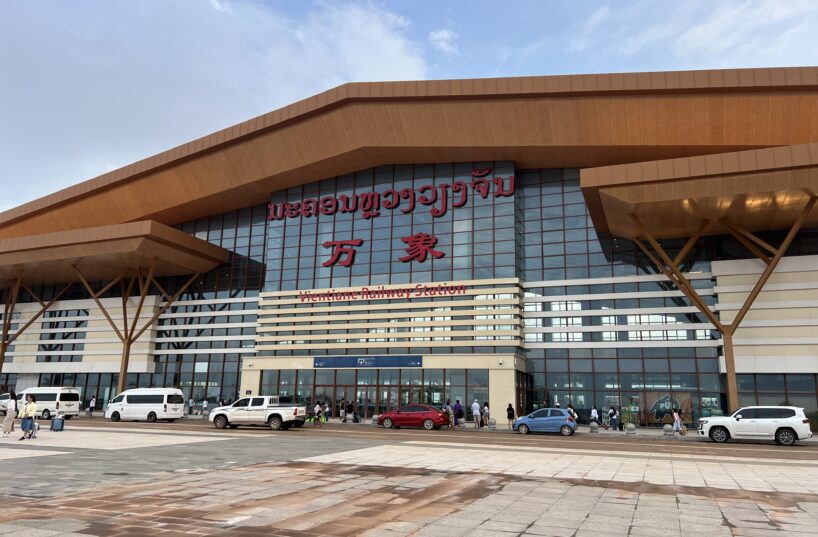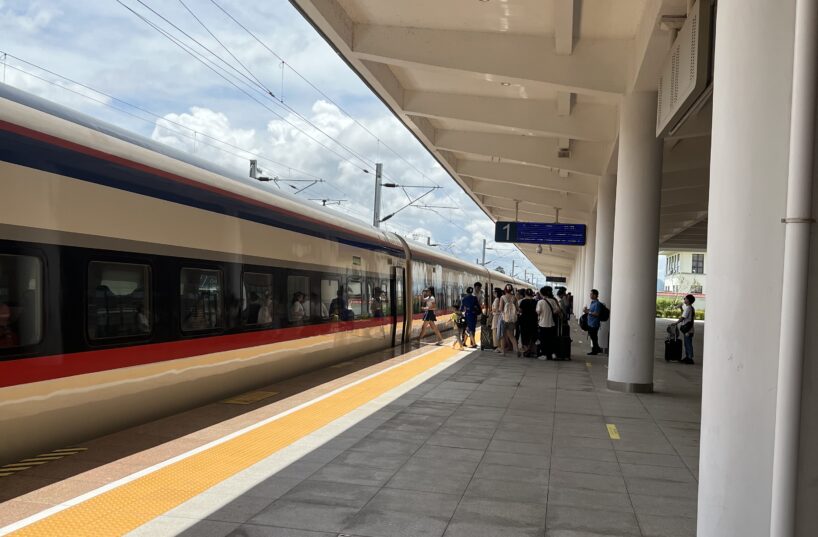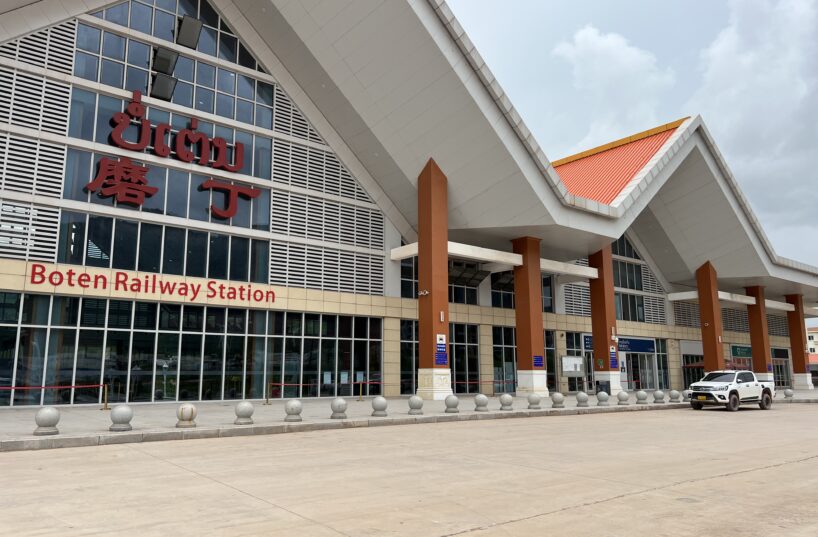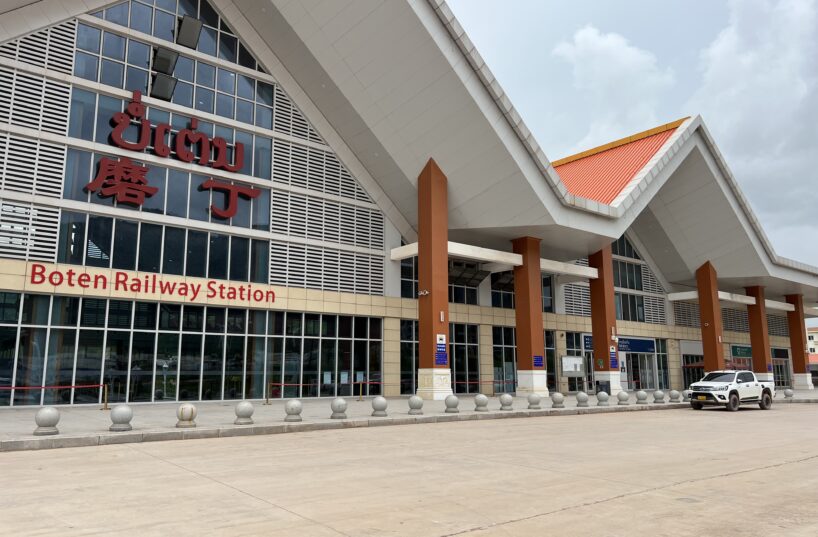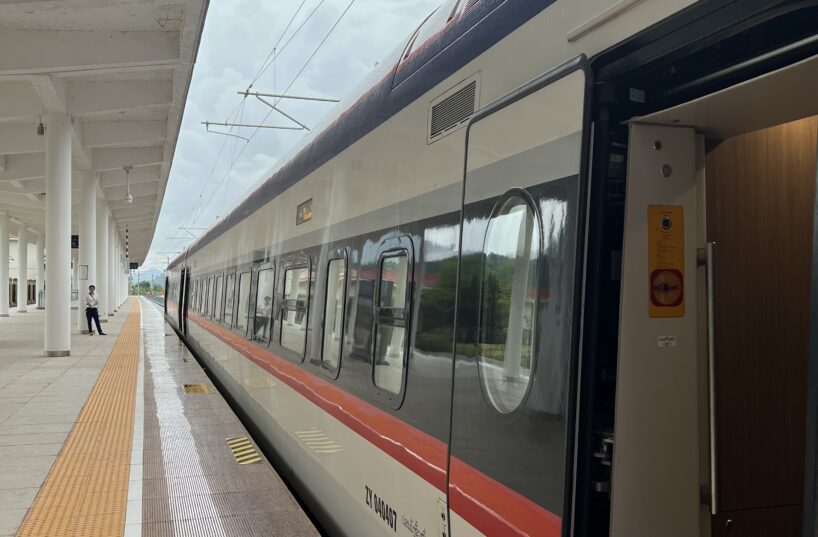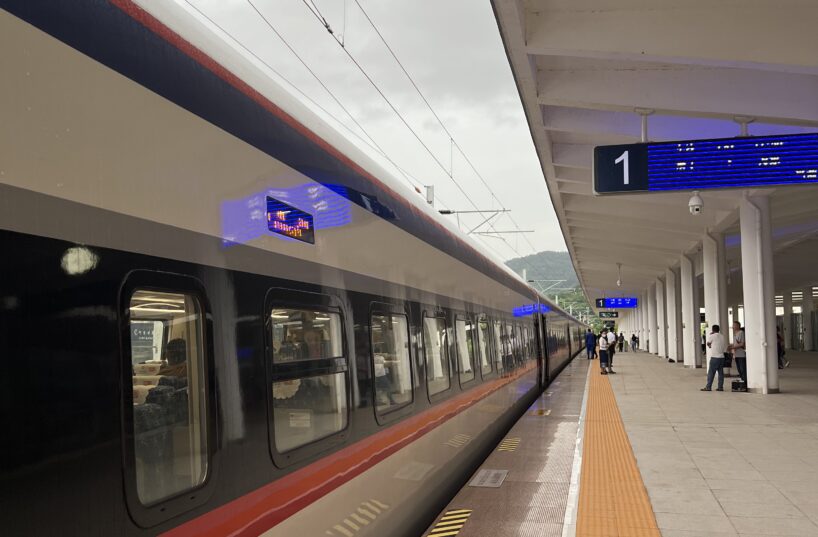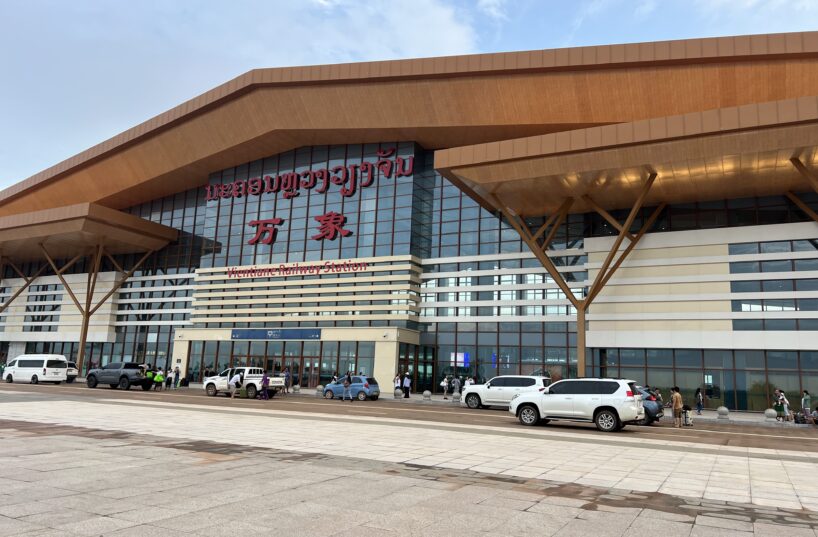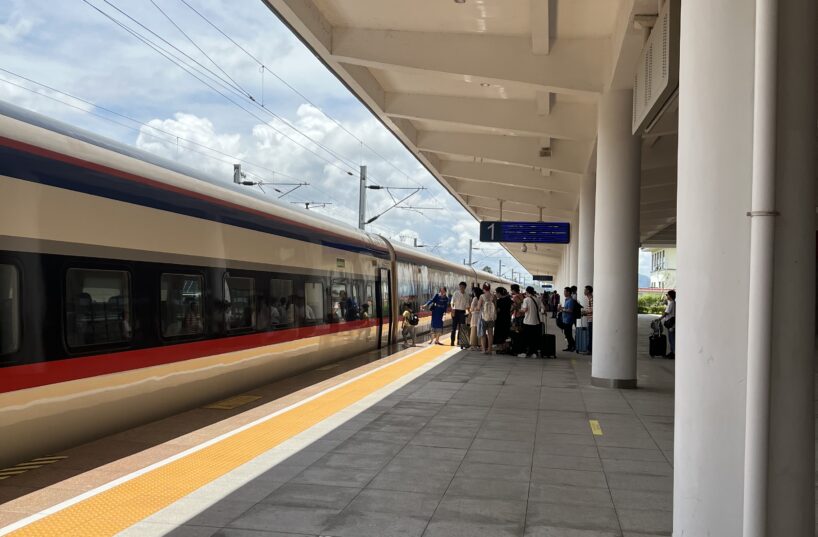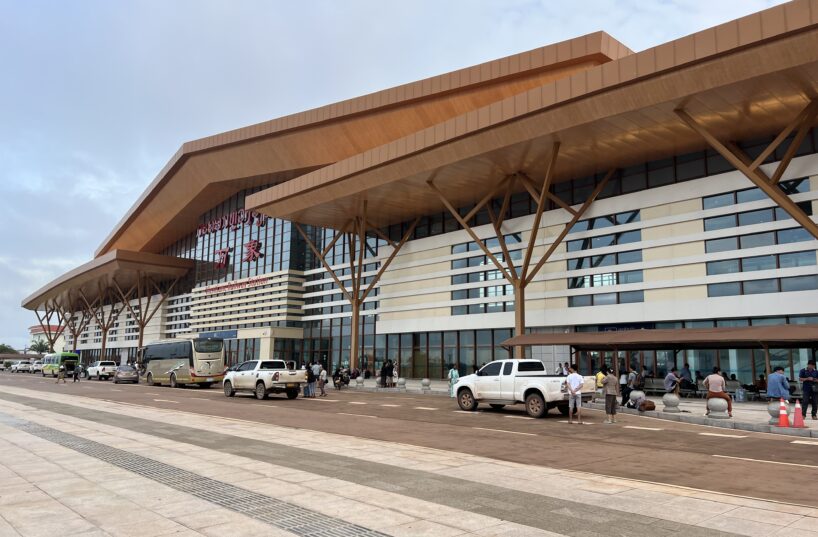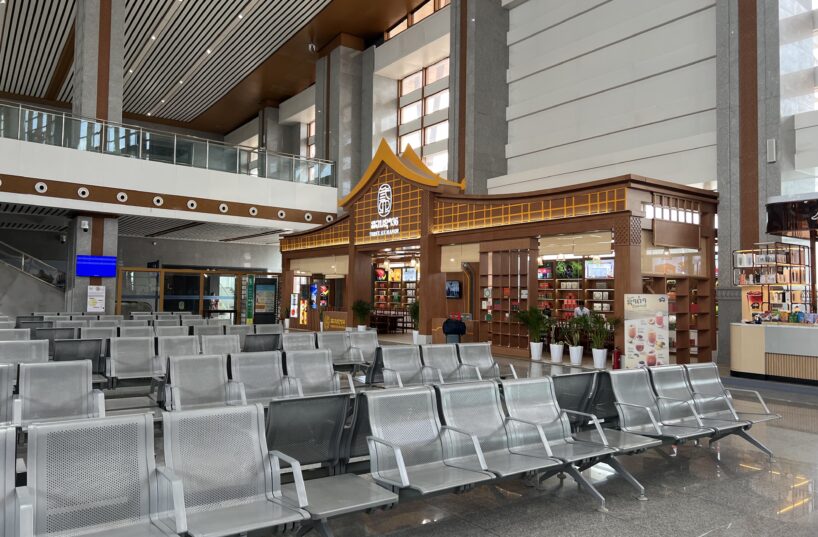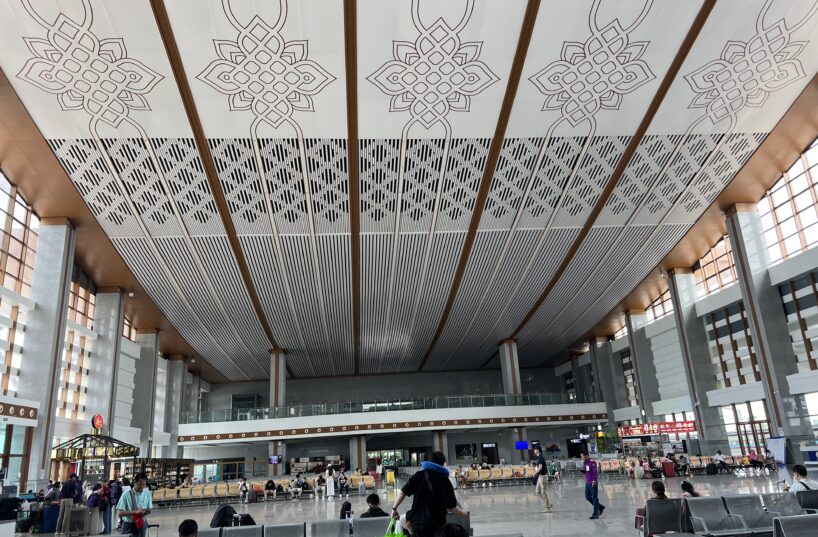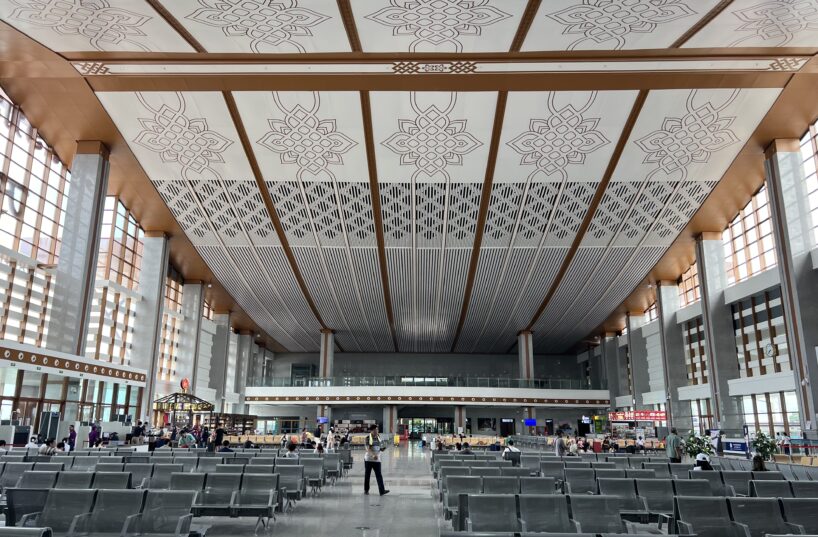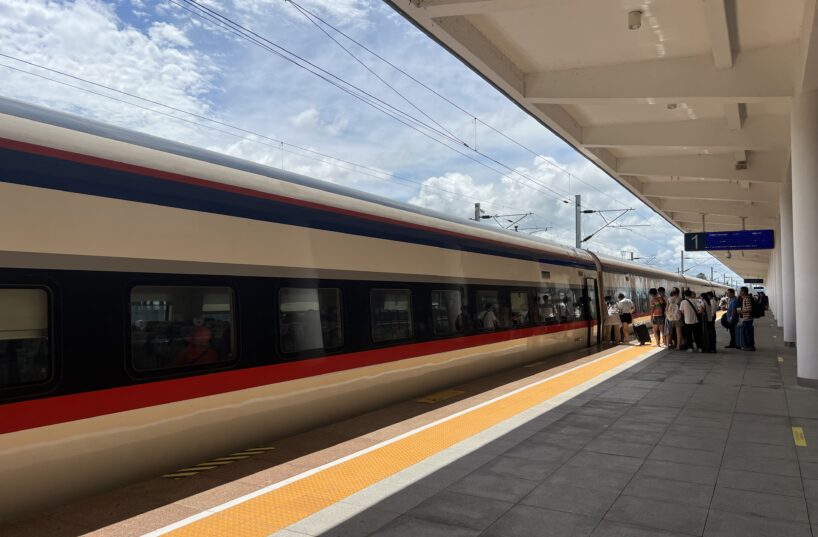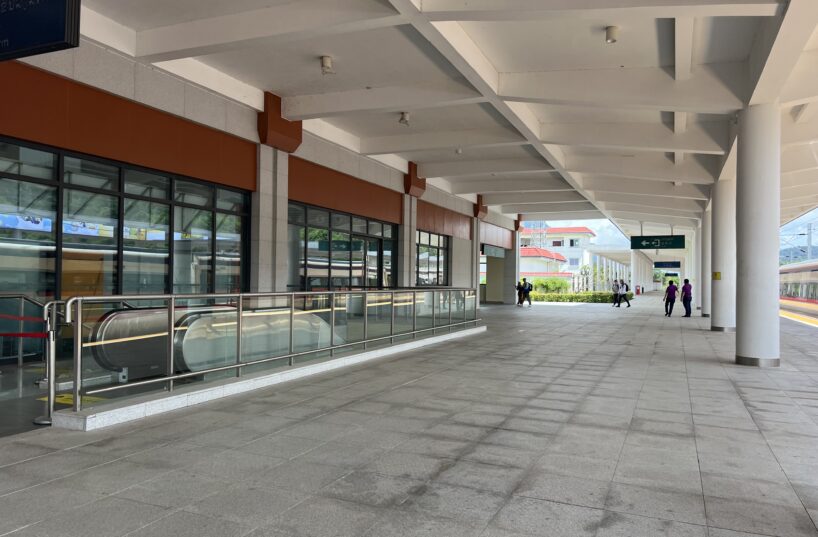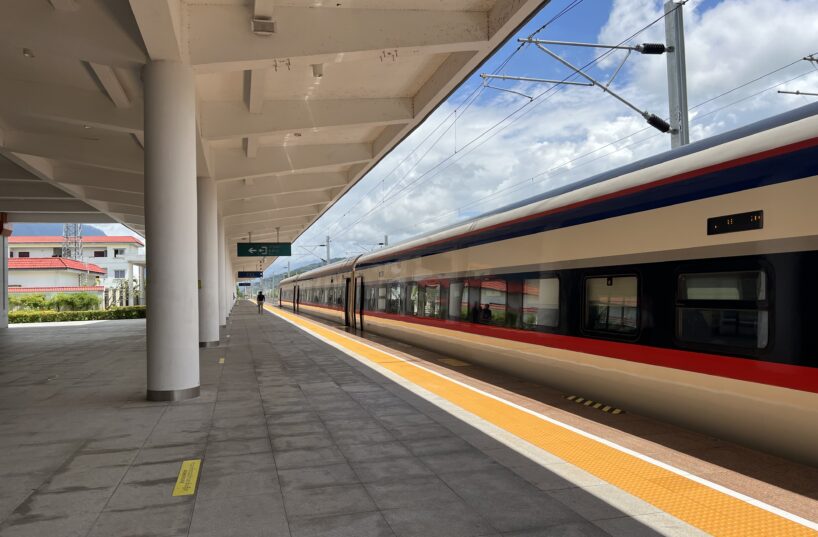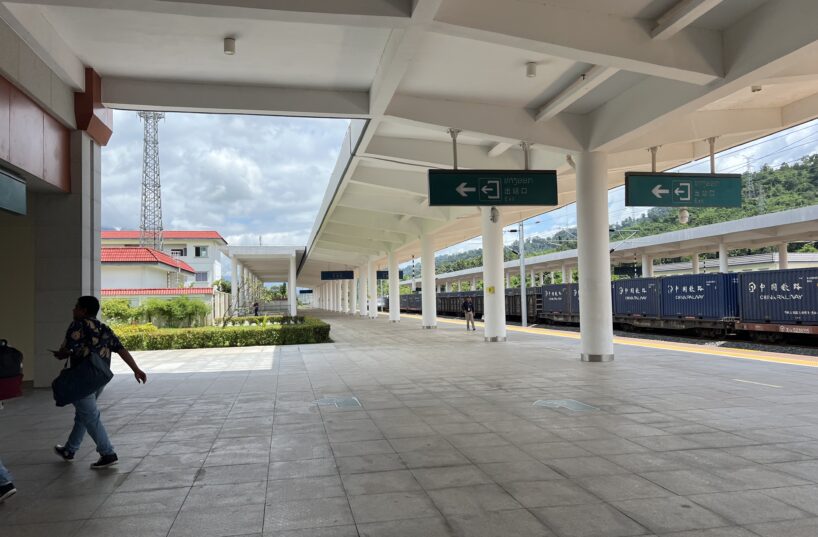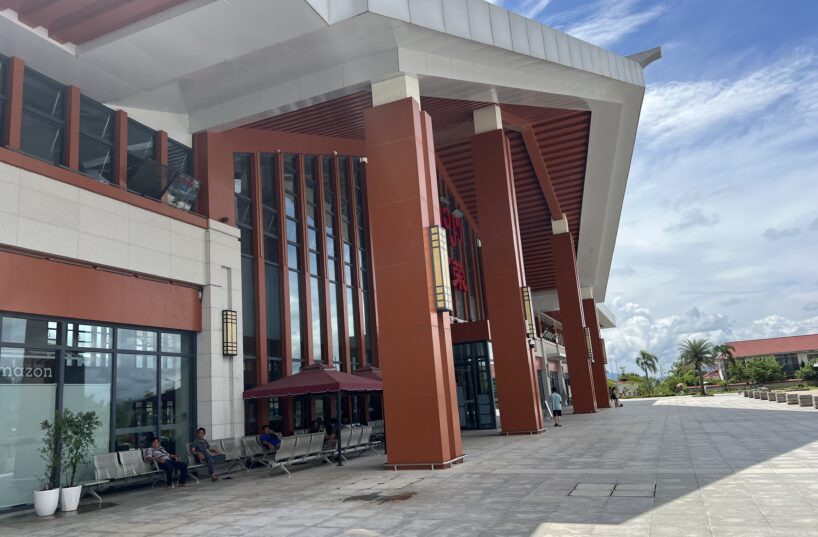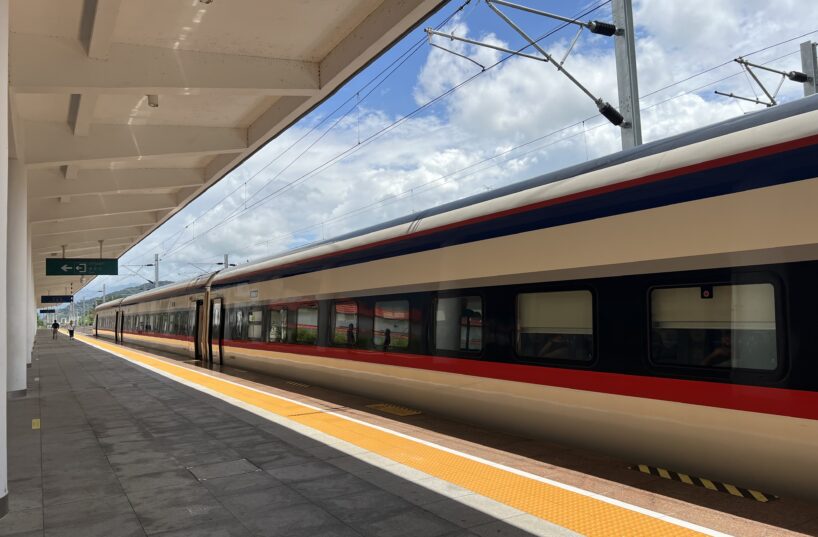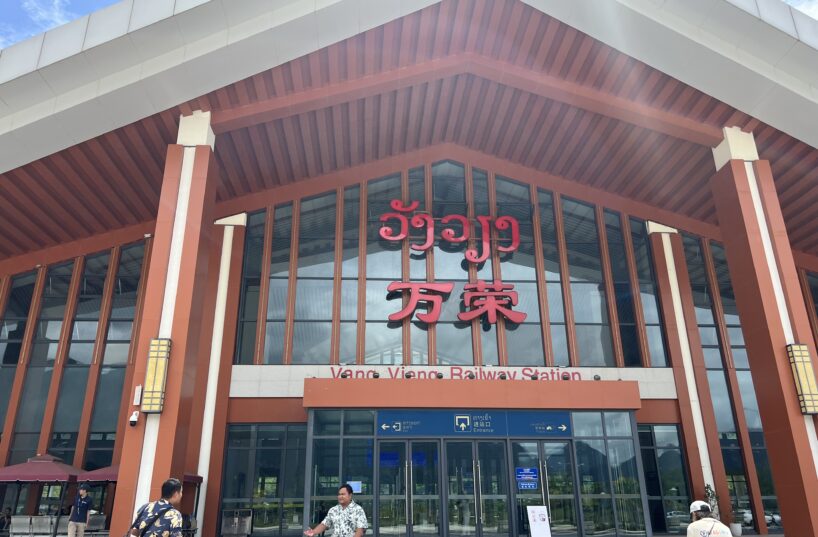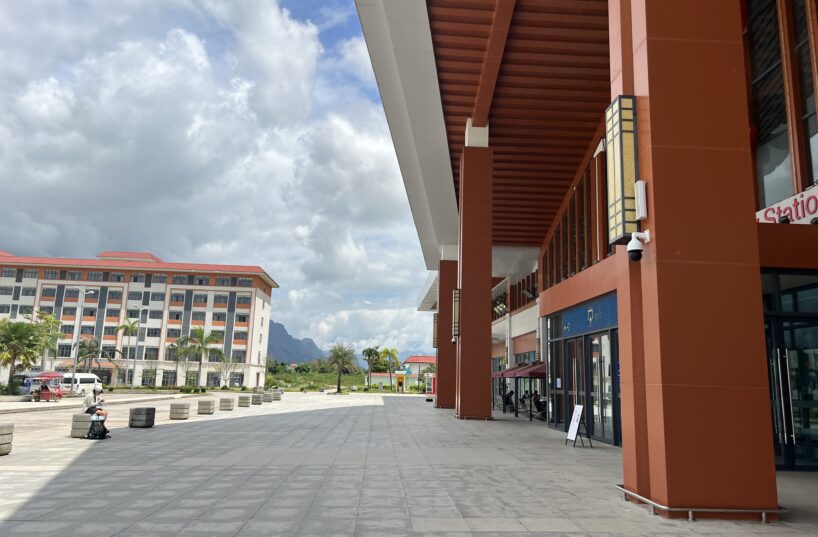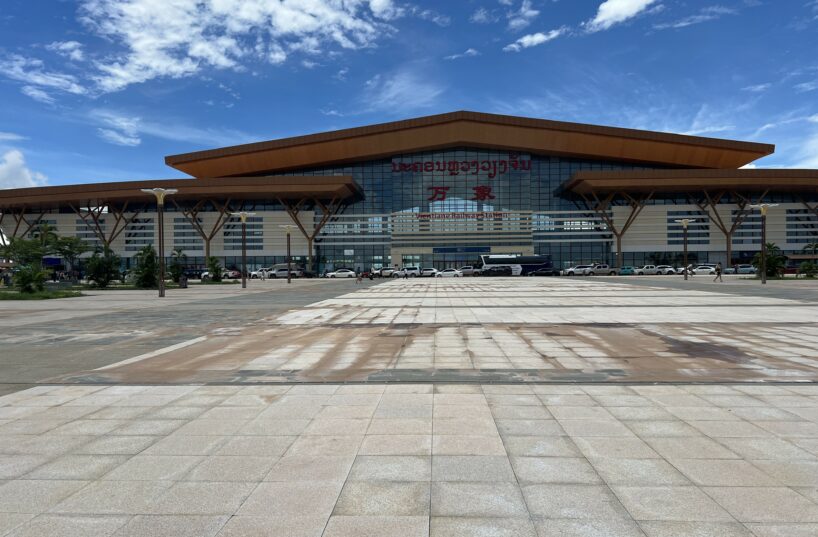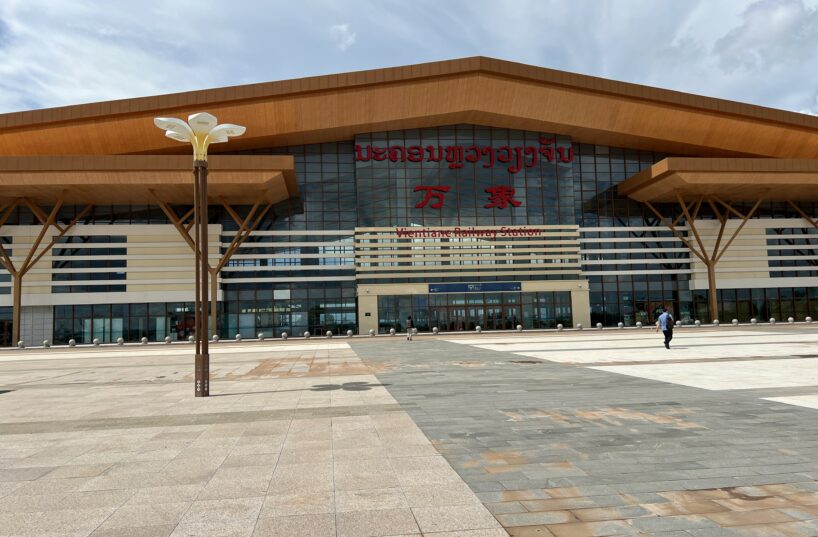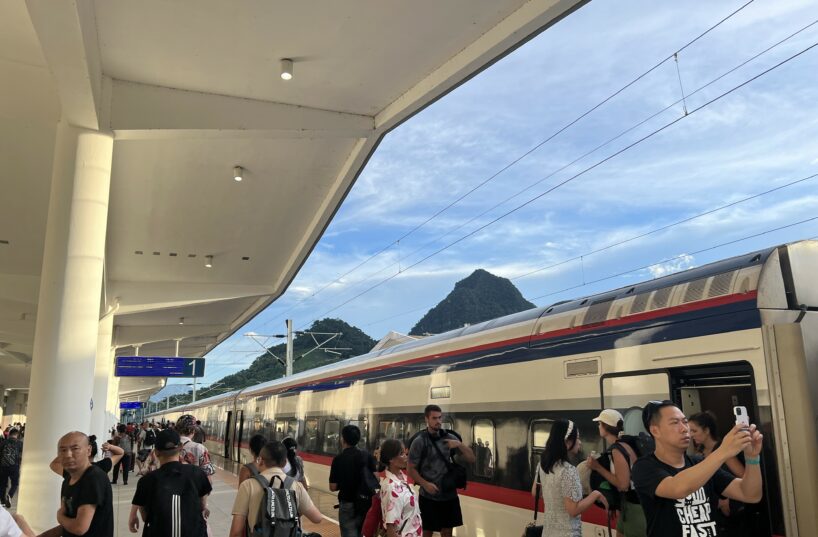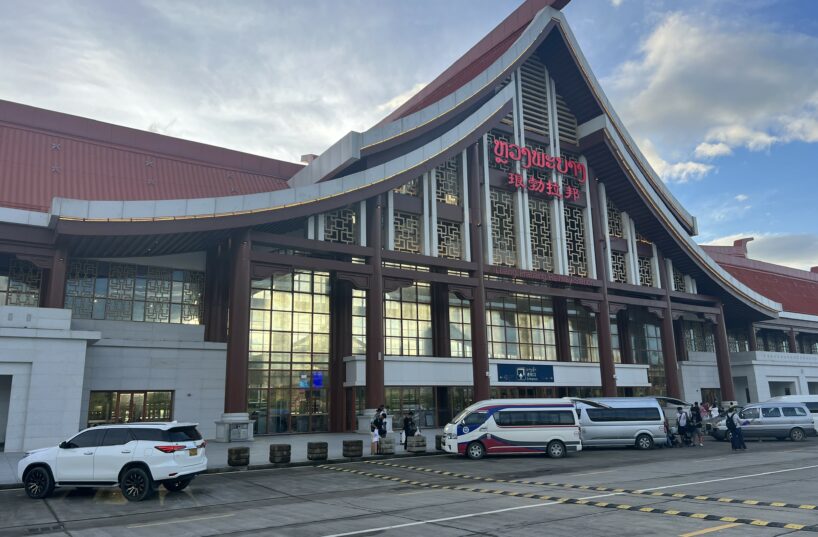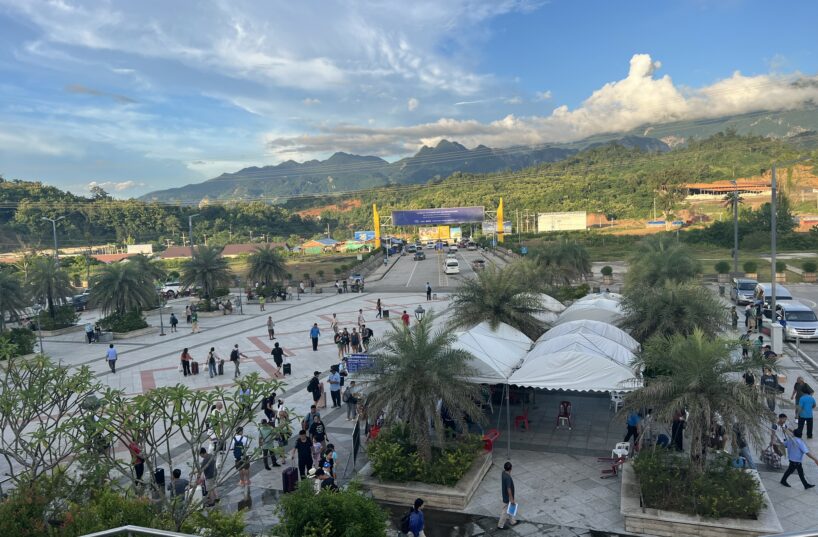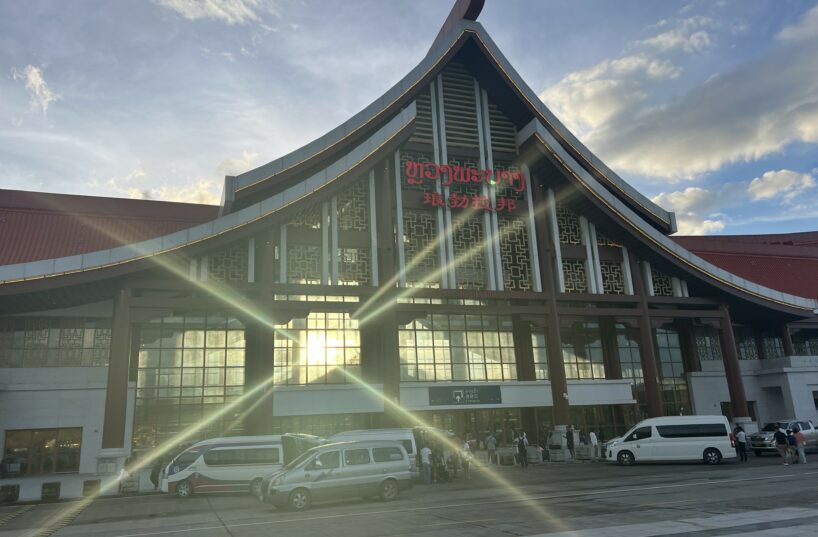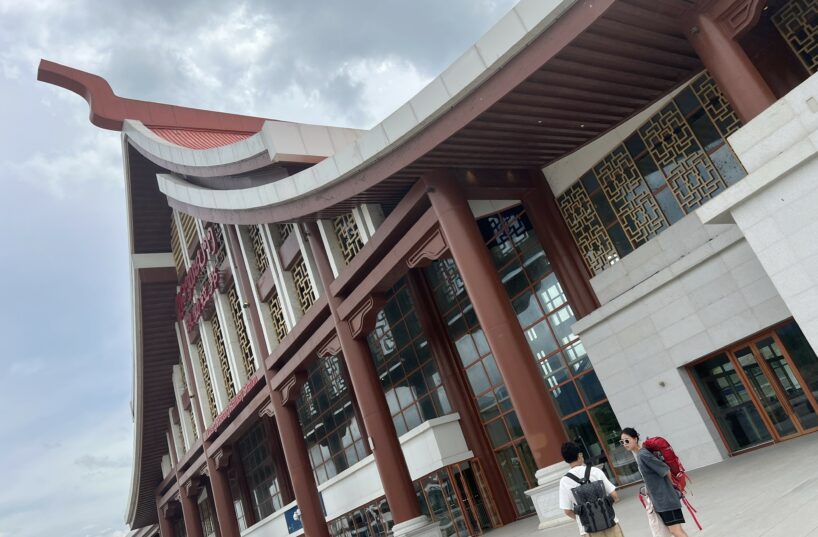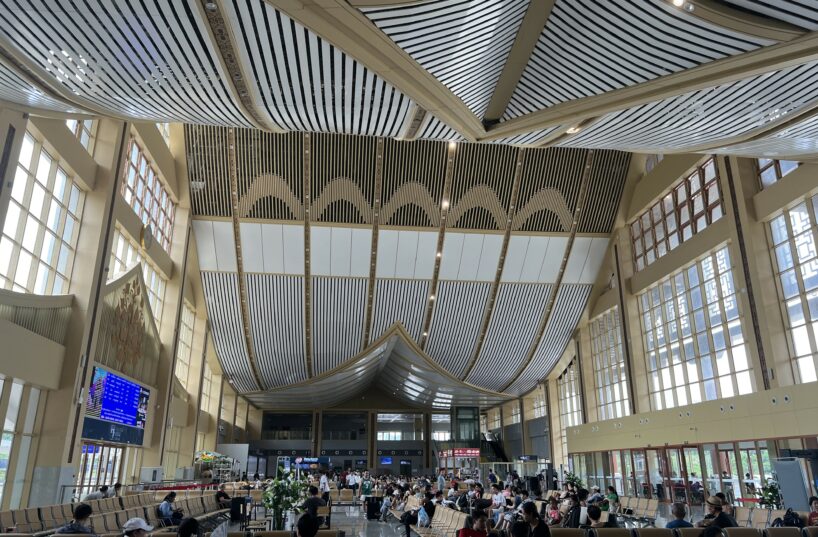LAOS-CHINA RAILWAY
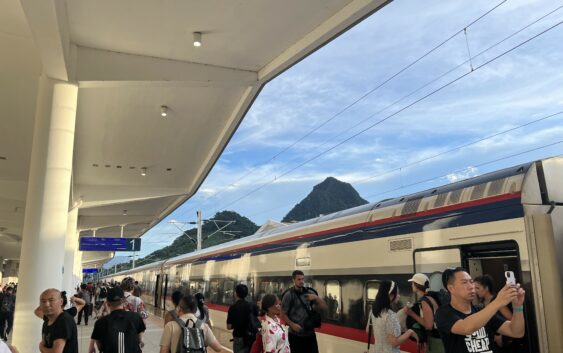
The Laos-China Railway is a significant infrastructure project that connects Kunming, in China’s Yunnan Province, to Vientiane, the capital of Laos. It is part of the larger Belt and Road Initiative (BRI), a global development strategy launched by China in 2013 to enhance regional connectivity and economic cooperation.
Key Milestones:
2010 : Initial discussions between Laos and China about the railway project began.
2015 : The two countries signed an agreement to build the railway, with construction set to begin in 2016.
2016 : Construction officially started, with the project being funded primarily by Chinese loans and investments.
December 2021 : The railway was completed and officially opened for operation, marking a historic moment for both countries.
The railway spans approximately 414 kilometers (257 miles) through Laos, with 70% of the route consisting of bridges and tunnels due to the mountainous terrain. The project cost around $5.9 billion, making it one of the largest infrastructure projects in Laos’ history.
The Laos-China railway offers numerous potential benefits to the people of Laos. Here are some positive reasons why this railway can be advantageous:
1. Economic Growth and Development:
– Trade Facilitation: The railway enhances trade connectivity between Laos and China, making it easier and faster to transport goods. This can boost Laos’ export economy, particularly in sectors like agriculture, minerals, and textiles.
– Investment Attraction: Improved infrastructure can attract foreign investment, as businesses look for reliable transportation networks to support their operations. This can lead to job creation and economic diversification.
2. Job Creation:
– Construction and Operation: The railway project has already created thousands of jobs during its construction phase. Ongoing operations and maintenance will continue to provide employment opportunities for locals.
– Indirect Employment: The railway can stimulate job growth in related sectors such as tourism, hospitality, and logistics.
3. Tourism Boost:
– Increased Accessibility: The railway makes it easier for tourists to travel to and within Laos, potentially increasing the number of visitors. This can benefit local businesses, including hotels, restaurants, and tour operators.
– Cultural Exchange: Enhanced connectivity can promote cultural exchange and understanding between Laos and China, enriching the social fabric of both nations.
4. Improved Transportation:
– Efficient Travel: The railway provides a faster, more reliable mode of transportation compared to road travel, which can be hindered by poor road conditions and traffic. This can improve the quality of life for residents by reducing travel time and costs.
– Regional Connectivity: The railway links Laos to the broader Southeast Asian region, facilitating easier movement of people and goods across borders.
5. Infrastructure Development:
– Modernization: The railway project has spurred the development of modern infrastructure, including stations, roads, and utilities, which can have long-term benefits for local communities.
– Urban Development: The areas around railway stations may experience urban development, leading to improved services and amenities for residents.
6. Environmental Benefits:
– Reduced Carbon Footprint: Rail transport is generally more environmentally friendly compared to road transport, as it produces lower emissions per ton-kilometer. This can contribute to Laos’ efforts to reduce its carbon footprint and combat climate change.
7. Social Benefits:
– Improved Access to Services: Better transportation can enhance access to healthcare, education, and other essential services for remote and rural communities.
– Enhanced Quality of Life: The overall improvement in infrastructure and economic conditions can lead to a higher standard of living for the people of Laos.
8. Strategic Importance:
– Geopolitical Leverage: The railway enhances Laos’ strategic position in the region, potentially giving it greater leverage in regional negotiations and partnerships.
– Regional Integration: The project supports ASEAN’s goal of regional integration, fostering closer economic and political ties among member countries.
In summary, the Laos-China railway has the potential to bring about significant economic, social, and environmental benefits to the people of Laos, contributing to the country’s overall development and integration into the regional and global economy.
